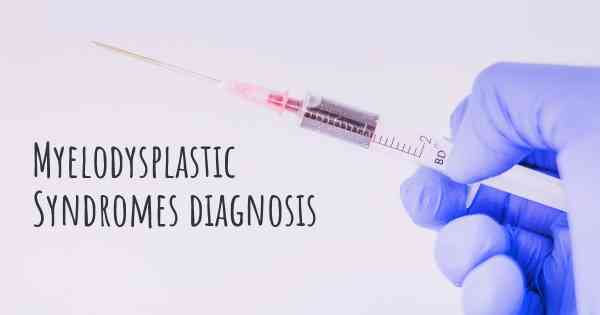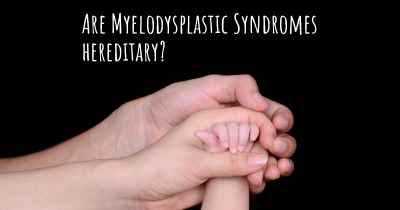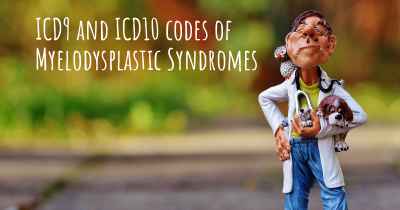How are Myelodysplastic Syndromes diagnosed?
See how Myelodysplastic Syndromes are diagnosed. Which specialists are essential to meet, what tests are needed and other useful information for the diagnosis of Myelodysplastic Syndromes

Myelodysplastic Syndromes (MDS) are a group of disorders characterized by abnormal production of blood cells in the bone marrow. Diagnosing MDS involves a comprehensive evaluation of a patient's medical history, physical examination, laboratory tests, and bone marrow examination.
Medical history: The first step in diagnosing MDS is a detailed medical history. The healthcare provider will ask about symptoms such as fatigue, weakness, recurrent infections, bleeding, or bruising. They will also inquire about any previous exposure to chemotherapy or radiation therapy, as these treatments can increase the risk of developing MDS.
Physical examination: A thorough physical examination is conducted to assess the patient's overall health and look for any signs of MDS. The healthcare provider may check for pale skin, enlarged liver or spleen, or abnormal bleeding.
Laboratory tests: Several laboratory tests are performed to evaluate blood cell counts and their characteristics:
- Complete blood count (CBC): This test measures the number of red blood cells, white blood cells, and platelets in the blood. In MDS, abnormalities in these cell counts may be observed, such as low red blood cell count (anemia), low white blood cell count (leukopenia), or low platelet count (thrombocytopenia).
- Peripheral blood smear: A blood sample is examined under a microscope to assess the size, shape, and appearance of blood cells. MDS may show abnormal or immature cells, known as dysplastic cells.
- Cytogenetic analysis: This test examines the chromosomes in the bone marrow cells. Chromosomal abnormalities, such as deletions or rearrangements, are common in MDS and can help confirm the diagnosis.
- Bone marrow biopsy: A small sample of bone marrow is taken from the hipbone or sternum using a needle. The sample is then examined under a microscope to assess the cellularity, presence of dysplastic cells, and determine the percentage of blasts (immature cells). This is a crucial test for diagnosing MDS.
Classification and risk assessment: Once MDS is diagnosed, further tests may be performed to classify the specific subtype and assess the risk of disease progression. These tests may include flow cytometry, molecular testing, and additional cytogenetic analysis.
Flow cytometry: This test analyzes the proteins on the surface of blood cells to determine their type and maturity. It helps in identifying abnormal cell populations and can aid in classifying MDS subtypes.
Molecular testing: Certain genetic mutations are associated with MDS. Molecular testing can detect these mutations, such as mutations in genes like TP53 or SF3B1. Identifying specific mutations can provide valuable prognostic information.
Additional cytogenetic analysis: In some cases, more detailed analysis of chromosomal abnormalities may be required to refine the diagnosis and assess the risk of disease progression.
In conclusion, diagnosing Myelodysplastic Syndromes involves a combination of medical history, physical examination, laboratory tests, and bone marrow examination. These diagnostic procedures help healthcare providers determine the presence of MDS, classify the subtype, and assess the risk of disease progression. Early and accurate diagnosis is crucial for initiating appropriate treatment strategies and improving patient outcomes.
Diagnosis is made by Complete blood work, a!ong with a bone marrow biopsy and aspiration.
Posted Mar 19, 2018 by Glenda 600








